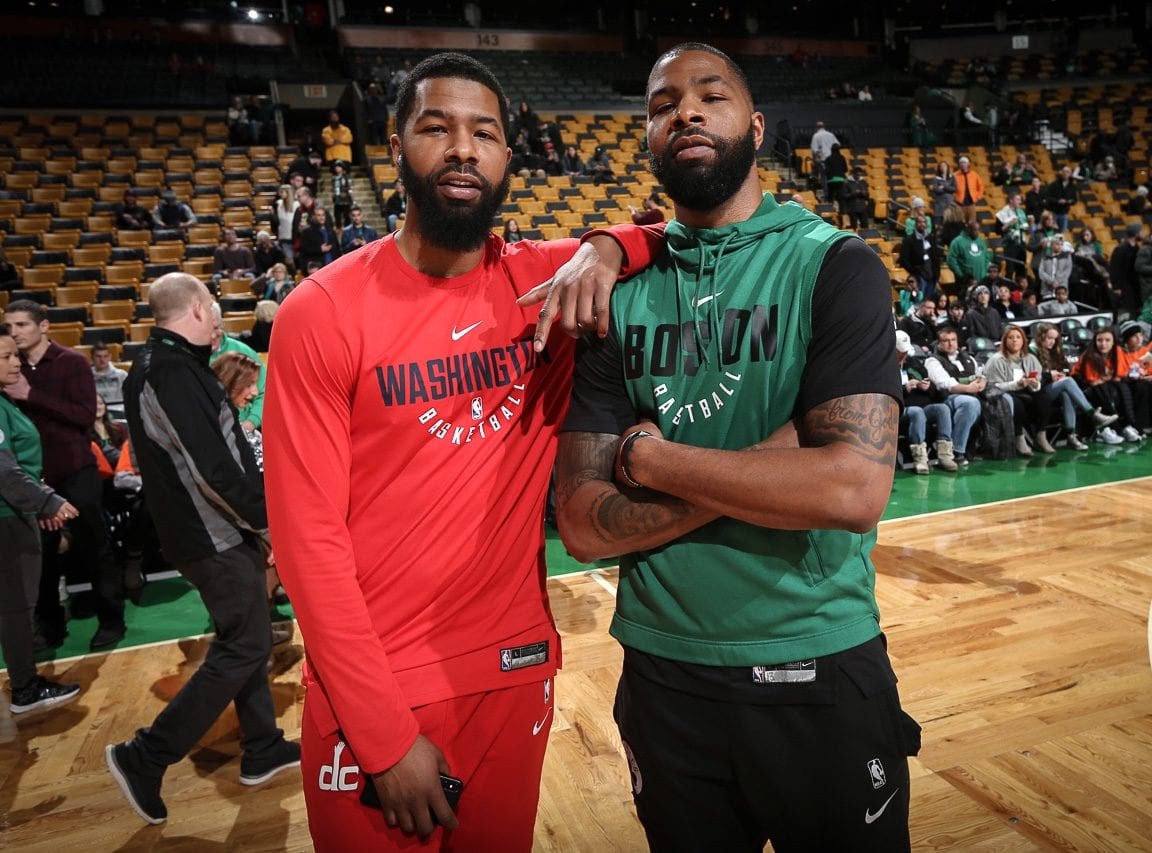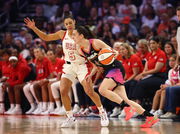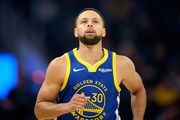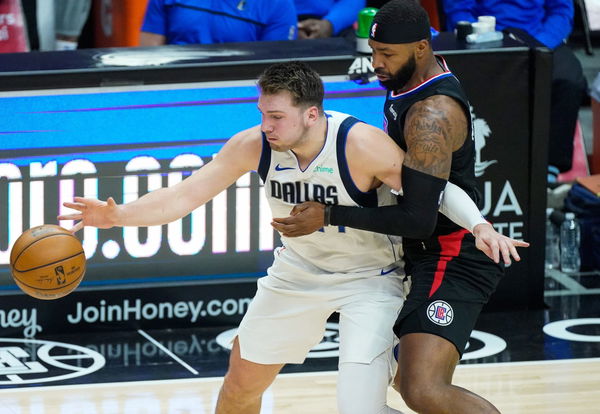

Marcus Morris Sr., often confused for his twin, Markief Morris of the Mavs, is back at the ‘Big Apple’. Having played for the New York Knicks in 2019-20 in 43 games, starting in all of them, the 13-year veteran played some of his best basketball with NYC. Morris Sr. averaged a career-high 19.6 points, going 44.2% from the field and 43.9% from downtown. It seems like the Knicks – and Marcus – are hoping he can replicate the same production for the upcoming season, as well.
Watch What’s Trending Now!
Well, if not exactly, at least close. The man is 35 years old, after all. A true journeyman, the 6’8″ power forward has played for nine teams in the course of his career, the latest being the 76ers and Cavaliers. Yup! The dramatic James Harden trade to the Clippers saw him move to Philly. From there, the Buddy Hield to the Sixers trade saw him end up in Cleveland with whom he finished the 2023-24 season.
And as of September 15, 2024, Marcus Morris Sr. is part of the New York Knicks on an Exhibit 9 contract. The Knicks’ official X page for Public Relations posted the update.
ADVERTISEMENT
.@nyknicks Sign Marcus Morris Sr. to an Exhibit 9 Contract pic.twitter.com/44hhwrfiPd
— NY_KnicksPR (@NY_KnicksPR) September 15, 2024
Interestingly, this is the second notable contract the franchise has signed of late. New York had signed the veteran sharpshooter Landry Shamet to Exhibit 9 a day prior. In its simplest terms, Exhibit 9 is a training camp invite that allows practically anyone looking to make it to the NBA to showcase their skills and impress the organization to convert them into a standard contract and a permanent place on the roster.
But if we were to go a little deeper, what exactly does this mean?
ADVERTISEMENT
What is the Exhibit 9 contract that Marcus Morris signed with the Knicks?
As mentioned above, this contract allows the franchise to sign players without having to worry about financial burdens. The team gets players for scrimmages and drills, as well as provides competition. Of course, the allure here is the chance at a roster spot in the regular season.
ADVERTISEMENT
Exhibit 9 is a one-year, fully non-guaranteed contract. Moreover, this contract does not count against the team’s salary cap or the luxury tax. Hence, the not worrying part. See why they are also called “summer contracts” or “training camp contracts”? However, what if the franchise wants to keep the player, in our case here, Morris on the roster?

ADVERTISEMENT
The straightforward process is to keep them on the roster for the opening night. As such, the Exhibit 9 contract converts to a standard non-guaranteed contract. Once that happens, it will count against the organization’s salary cap as well as the luxury tax. But bear in mind that it’s still a non-guaranteed deal. Not for long, though.
Top Stories
Caitlin Clark Shows Concerning Signs vs. Kelsey Plum During USA Camp Debut, per National Reporter

Did Zion Williamson Slide Into Sydney Sweeney’s DMs? Fact Checking the Viral Screenshot

NBA Urged To Take Action After Stephen Curry, Warriors’ ‘Blatant Cheating’ Caught on Camera

Victor Wembanyama Breaks Down in Tears After Death News as Fans Backtrack on NBA Cup Criticism

USA Camp Thrown Into Uncharted Territory by Caitlin Clark & Aliyah Boston, per National Reporter

If a team so wishes, they can guarantee the contract at any point. However, if it’s not done by the league-wide guarantee date of January 10, the contract automatically gets fully guaranteed. But things don’t end there, do they? As an example, suppose the Knicks choose to retain Marcus Morris Sr. for the entire season after they convert his Exhibit 9 contract to a standard deal. Morris then becomes a free agent following the end of the season.
ADVERTISEMENT
And if NYC is eligible to do so, they can issue a qualifying offer, thereby turning the Kansas alum into a restricted free agent. In the absence of any such aspects, Morris becomes an unrestricted free agent. But say the ‘Empire State’ wants to keep the 2011 first-round pick for the foreseeable future. What is the process there?
They have got two options: One, the above-mentioned one-year contract. The second is more risky. The Knicks can waive the player from the Exhibit 9 deal and hope they clear the waivers. Once that happens, they become a free agent and teams can sign them to whatever contract is available to them through cap space or exceptions. Interestingly, though, teams signing players to Exhibit 9 aren’t completely devoid of responsibilities.
ADVERTISEMENT
The special clause of Exhibit 9
It is a provision that protects the player against injuries when under contract with a particular team. So, if Marcus does end up getting injured while playing for the Knicks, per the terms of Exhibit 9, the franchise is liable to pay him an amount of $15,000. In the past CBA, it was as less as $6,000. However, with the revised policy, the injury payment also received a leg up.

ADVERTISEMENT
In addition, this money will be listed under the salary cap and luxury tax as ‘dead money charge,’ as and when the player gets waived. Also, a team cannot sign more than six players at a time to the Exhibit 9 contract. All in all, this can, at best, be viewed as a chance for players to showcase their talents in hopes they impress the team enough to get them a roster spot.
And for the teams, it provided enough manpower without hurting their finances. Until a player actually gets hurt, that is. But even then, $15,000 would probably feel like a drop in the water for these franchises worth millions.
ADVERTISEMENT
As for Marcus Morris Sr., he will be competing against Shamet and a 26-year-old Chuma Okeke, who is on an Exhibit 10 contract with the Knicks for that final roster slot. What do you think Morris’s chances are of landing a spot? Tell us in the comments.
Hungry for more basketball content? Check out this crossover between BG12 and Georgia Bulldogs star Asia Avinger.
ADVERTISEMENT
ADVERTISEMENT
ADVERTISEMENT

